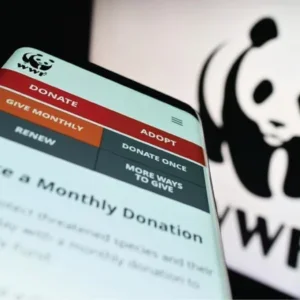With the exception of the doubleface market, 2003 was another depressing year for the Spanish leather sector. According to figures released by the Spanish tanners’ association, CEC-Fecur, exports of finished leather fell from €403 million in 2001 to €330 million in 2002 to only €273 million last year. This a fall of 32% in two years (see Table 3).
‘Nappa leather sales for footwear upper were very poor last year and overall sales of bovine leather were also weak’, Josep Ballbè, general director, CEC-Fecur told Leather International. ‘We are experiencing a lower economic cycle at the moment, which is depressing the market. The impact of a strong euro and the transfer of footwear manufacturers away from Spain have also worsened the situation’, he added.
Many low/medium level footwear producers have switched their manufacturing operations to cheaper bases in north Africa (such as Tunisia and Morocco), Latin America or eastern Europe, although only a few have moved production to Asia.
‘The strength of the euro, especially against the dollar, has made the export business much harder’, says Ballbè. ‘Cheap foreign imports sold in dollars have made their products more competitive as ours become more expensive.’
The doubleface market appears to be the major growth area for Spanish tanners. Doubleface garments continue to be in fashion and new or expanding markets in eastern and south-eastern Europe are helping. Spanish wool-on tanners were very evident at trade shows in Russia and Türkiye in 2003 and they also have the successful domestic show Pielespaña.
Data analysed by CEC-Fecur showed doubleface leather output remained firm for the first three-quarters of the year but dropped significantly during the final quarter.
European markets in recession
Table 4 shows that most exports remain in the European Union accounting for approximately two-thirds of the total. As European markets have declined (or risen), so have sales of Spanish leather. Following a good 2001, exports have continued to decline. The problems are not unique to Spain and other major European markets, especially Italy, have suffered from a similar fall in orders.
Many of Spain’s major export markets such as Germany, France and Italy have been in recession for the past few years, lowering the consumption of products made with Spanish leathers. Table 3 shows that nearly all of Spain’s major export markets are buying less Spanish made leather.
New markets
In Table 3 it can be seen that Hong Kong has shown a growth over the three-year period with China growing in the first two years but dropping off slightly in 2003. Türkiye, which is a strong export market for Spanish doubleface, rose considerably from 2001 to 2002 but declined in 2003.
According to Ballbè, China is still a difficult market to enter for Spanish tanners and most approach the country through Hong Kong. However, a number of tanners with different leather types have formed trade consortiums to do business in China. Currently, there are three or four such consortiums. Each member shares the cost of a warehouse or showroom in China or Hong Kong as well as sharing the costs of shipping leathers.
Table 3 also shows that Spain is exporting to new markets in eastern Europe such as Poland and Russia. ‘The tanners are looking at new markets in the former Soviet block countries and Asia’, says Ballbè. ‘Many are also looking at lowering their costs as well as developing a more fashion orientated range of leathers.’
Domestic woes
Spain has a number of tannery clusters based around the Catalan towns of Vic and Igualada, Valencia and the town of Lorca in Murcia. According to CEC-Fecur, it is the cluster around Lorca that has suffered the most in the past couple of years as they have traditionally produced leather for low/medium quality leather footwear. Lorca is also more heavily dependent on the domestic market, which has witnessed competition from cheap foreign imports from Latin America, north Africa and Asia.
The March edition of Leather International, we reported that CEC-Fecur had signed agreements with trade unions (news page 9) for the future prosperity of the sector. A white paper on the sustained development of the sector as a whole and by region is currently being drafted.
In 2002, there were approximately 206 tanneries in Spain employing over 120,000 workers. Leather output was worth €7.251 billion with exports of €3.2 billion making the Spanish leather industry the second largest in the EU behind Italy. According to a recent Spanish economic report on the industry, the number of tanneries fell by 2.4% between 2001 and 2002 and the number of employees dropped by 6.6% over the same period.
Sectorial promotion
Through national, European and regional government support as well as the leather sector itself, funding has been made available to promote the Spanish leather sector. In 2003, CEC-Fecur launched the ‘Leather from Spain’ campaign to promote and market the fashion and quality of the nationally-produced product both in Spain and abroad.
Members of the industry met leading garment designers in January for a round table discussion on ideas, problems and fashion trends. Similar meetings have been proposed for other sectors such as footwear. Also, at this year’s Pielespaña show held in Barcelona in January, there was a special area highlighting Spanish leather in an artistic and abstract manner. ‘Leather Surrealism’ features leather from Spain’s most prestigious tanneries and is part of a collaboration between CEC-Fecur, ICEX and the Italian magazine Vogue Pelle with the artistic direction of Gianluca di Maulo.






